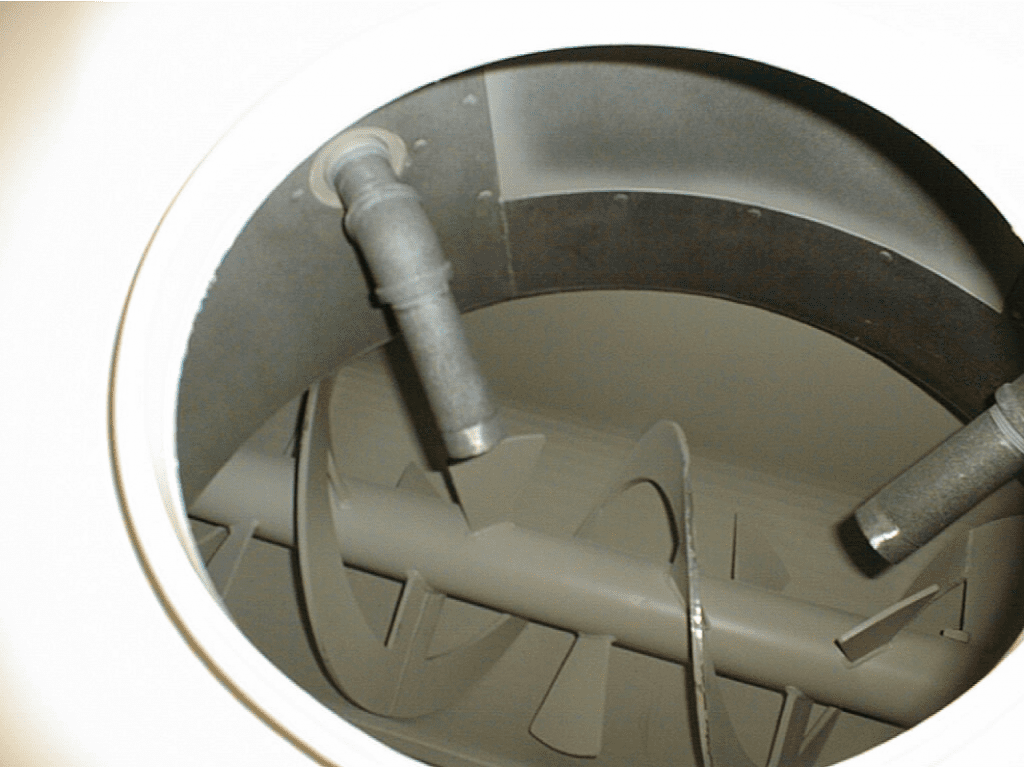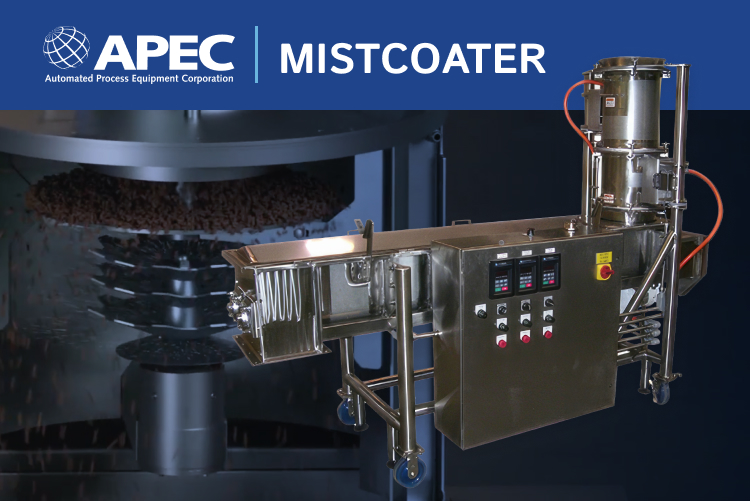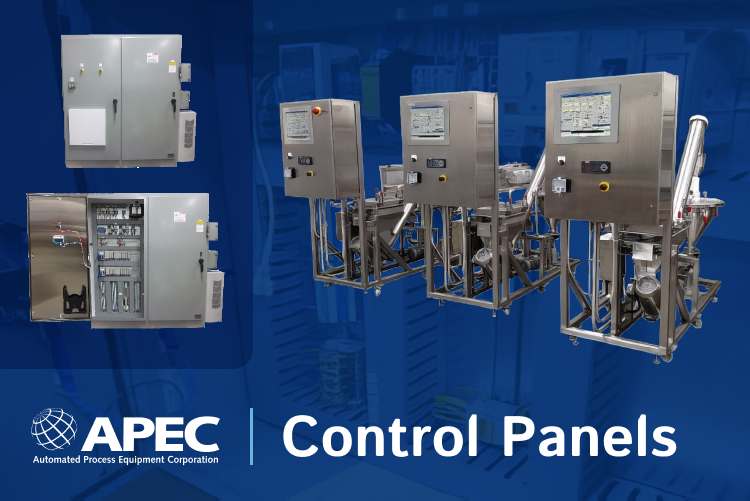
Spray equipment and coatings present a number of challenges to food and pet food manufacturers. Spray coating systems, as well as the coating liquids, can be difficult to work with. Workplace hazards, equipment maintenance problems, expenses, down time and other problems may arise. In this blog post, we’ll discuss some of the most common problems with these systems, as well as some solutions.
Spray Equipment and Coatings: Problems and Solutions
Clogging and Crystallization During Spray Coating

Many spray equipment systems and coatings are not well-suited for each other. Suspended solids in the coating can clog the spray nozzles in the machine, requiring repeated cleaning and maintenance. Salt and sugar solutions work similarly, creating crystals that clog the nozzle. If the spray nozzles aren’t regularly cleaned, the liquid coating can’t break through, creating problems with uniformity and back pressure (we’ll discuss these in more detail later in the post).
Solution
Spray nozzles aren’t ideal for coatings with suspended solids, or salt and sugar solutions. Consider spray equipment can atomize coatings without the need for a narrow outlet. APEC’s Mistcoater uses a rapidly spinning disk to atomize liquid coatings into fine droplets. This eliminates opportunities for clogs and crystallization.
Inconsistent Coating
Different liquid coating characteristics can affect their compatibility with different spray equipment. As previously mentioned, suspended solids and salt or sugar content, as well as liquid percentage and viscosity can affect the uniformity of the coating. As a thick solution moves through the spray nozzles, the high viscosity creates inconsistent flow. Or, some spray nozzles may be clogged, while others continue to work, creating inconsistencies across the product. Some pieces can be coated too heavily, and others might not be coated at all. This means food and pet food manufacturers must take special considerations to ensure uniform coatings across the product.
Solutions
Spray nozzle coating systems present a variety of challenges in choosing the right coating. A liquid that is too thick or has too many suspended solids can render the entire system ineffective. An atomizing system which removes the need for spray nozzles can provide uniform coating over a longer period of time. Thinning the liquid may also be effective, however this may also affect how well the coating sticks to the product.
Back Pressure Build-up
When crystals and clogs build up on spray nozzles, it causes pressure to build up throughout the rest of the spray equipment. This means the machines require more horsepower to operate, wearing them down prematurely and using excessive power.
Solutions
Once again, removing the opportunity for clogs provides an easy solution to this problem. When the fat, oil, salt or sugar solution is atomized over a spinning disk instead of being forced through a small outlet, there is no back pressure build up. Regularly cleaning spray nozzles or reducing the liquid’s viscosity can also help to reduce problems with back pressure.
Workplace Hazards and Sanitation
Spray equipment and coatings can also present a number of workplace challenges. Coatings on food and pet food not only get sprayed onto the product, but also move through the air, stick to the floor, stick to workers, equipment, and any exposed surface. When working with fats and oils, this also introduces sanitation problems. These coatings can make their way into cracks in the floor, small spaces on machines, and other areas that are difficult to clean. This creates perfect opportunities for mold and bacteria to build up. Sprayed coatings in the air and oily, slippery floors also create workplace hazards for employees.
Solutions
The best solution for these sanitation problems and workplace hazards is enclosing the spray coating system. The Mistcoater spray coating system is fully enclosed, keeping the coatings inside and preventing them from entering the air or sticking to other surfaces. Enclosing spray coating systems can help to dramatically reduce the amount of housekeeping and safety measures needed to keep your workplace safe and sanitary.
Consider your spray equipment and coatings carefully in the equipment design phase, and you can avoid many of these issues. If you’d like to learn more about the fully-enclosed Mistcoater spray coating system for your food or pet food products, contact us.







